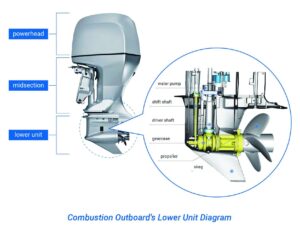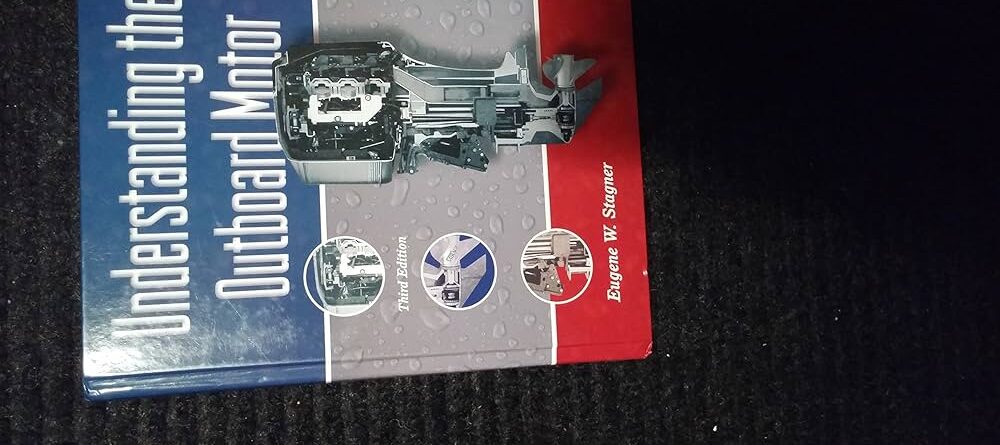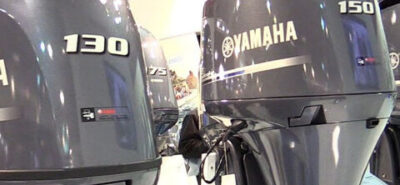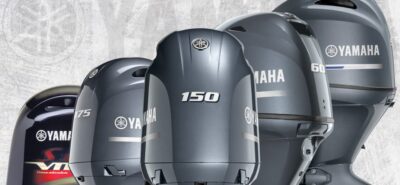Understanding Outboard Motors: The Complete Guide
Learn the basics of using an outboard motor with our comprehensive guide. Discover how to choose the right motor, start and operate it effectively, and follow essential maintenance tips to keep it running smoothly. Perfect for both beginners and experienced boaters, this guide ensures safe and efficient boating experiences. Includes safety recommendations and best practices for long-term motor care. Read now to maximize your outboard motor’s performance.
What is an Outboard Motor?
An outboard motor is a compact, self-contained engine mounted on the outside of a boat, typically at the stern. It powers the vessel by rotating a propeller, allowing for maneuverability and speed control. These engines are popular in recreational boating, fishing, and other marine activities due to their portability, ease of maintenance, and flexibility.
How Outboard Motors Work
Outboard motors operate by converting fuel into power, which turns the propeller, pushing the boat through the water. The engine typically includes a motor, gearbox, and propeller assembly. This entire unit is attached to the boat’s transom, allowing it to pivot and steer the boat. Outboard motors can range from small, lightweight units for dinghies to large, powerful engines for speedboats and yachts.

Types of Outboard Motors
There are various types of outboard motors, categorized by power output, fuel type, and intended use:
- Portable Outboards (2-20 HP)
- Best suited for small boats, dinghies, and inflatables. These lightweight motors are easy to carry and mount, making them ideal for smaller watercraft.
- Mid-range Outboards (25-150 HP)
- Common for fishing boats and recreational vessels. These engines offer a balance of power and fuel efficiency.
- High-powered Outboards (200+ HP)
- Designed for high-performance boats and larger crafts. These motors provide speed and durability, perfect for water sports or long trips.
Yamaha Outboard Weight Comparison Chart
Yamaha 2.5 – 25 HP Outboard Models

Yamaha 2.5 HP Outboard Weight
The Yamaha F2.5, which has a shaft length of 15 inches, has a weight of 17 kg (37 lbs). On the other hand, the model with a 20-inch shaft weighs 20 kg (40 lbs). Additionally, there is a weight of 0.4 kg (0.8 lbs) for the engine oil and gear oil.
Yamaha 4 HP Outboard Weight
The Yamaha F4 comes in two shaft lengths. The 15″ shaft version has a weight of 27 kg (59 lbs), while the 20″ shaft model weighs 28 kg (61 lbs). Additionally, 0.6 kg (1.3 lbs) of weight should be accounted for due to the engine oil and gear oil.
Yamaha 6 HP Outboard Weight
The 15″ shaft variant of Yamaha F6 has a weight of 27 kg (59 lbs) while the 20″ shaft model weighs 28 kg (61 lbs). An additional weight of 0.6 kg (1.3 lbs) is contributed by engine oil and gear oil.
Yamaha 8 HP Outboard Weight
The Yamaha F8 has a weight of 39 kg (87 lbs) for the 15″ shaft version, and 40 kg (89 lbs) for the 20″ shaft version. Additionally, the engine oil and gear oil add up to 0.8 kg (1.8 lbs).
Yamaha 9.9 HP Outboard Weight
The 15″ shaft version of Yamaha F9.9 weighs 39 kg (87 lbs), while the 20″ shaft model weighs 42 kg (93 lbs). Additionally, the engine oil and gear oil contribute to a weight of 0.8 kg (1.8 lbs).
The weight of the Yamaha F9.9 (High Thrust) ranges from 46kg (102 lbs) to 51kg (114 lbs) for the 25″ longest shaft model with power trim. Additionally, the engine oil and gear oil add another 1 kg (2.2 lbs) in weight.
Yamaha 15 HP Outboard Weight
The Yamaha F15 outboard motor, featuring a 15″ shaft, has a weight of 50kg (111 lbs). In contrast, the 20″ shaft model weighs 60kg (132 lbs). Additionally, the engine and gear oil combined weigh 1.7 kg (3.8 lbs).
Yamaha 20 HP Outboard Weight
The Yamaha F20 comes in two variants: one with a 15″ shaft and a weight of 57 kg (126 lbs), and another with a 20″ shaft and a dry weight of 65 kg (143 lbs). Additionally, the engine oil and gear oil combined weigh around 1.1 kg (2.5 lbs).
Yamaha 25 HP Outboard Weight
The Yamaha F25 outboard with a 15″ shaft has a weight of 57kg (126 lbs), while the 20″ shaft variant weighs 65kg (143 lbs). Additionally, the engine oil and gear oil add another 1.2 kg (2.7 lbs) to the weight.
The weight of the Yamaha F25 (High Thrust) ranges from 64kg (141 lbs) to 70kg (154 lbs) for the 25″ shaft unit, with an additional 1.3 kg (2.9 lbs) for the engine oil and gear oil.
Yamaha 30 – 115 HP Outboard Models

Yamaha 30 HP Outboard Weight
The weight of the Yamaha F30 varies between 97 kg (214 lbs) and 101 kg (223 lbs), depending on the specific model. Additionally, the engine oil and gear oil contribute an extra 1.8 kg (4 lbs) to the overall weight.
Yamaha 40 HP Outboard Weight
The weight of Yamaha F40 varies based on the options chosen, ranging from 97 kg (214 lbs) to 101 kg (223 lbs). In addition, the engine oil and gear oil add an extra 1.8 kg (4 lbs) to the overall weight.
The weight range of Yamaha F40 (Jet Drive) varies from 99 kg (219lbs) to 103 kg (227 lbs) based on the specific model, while the engine oil and gear oil contribute an additional 1.4 kg (3.2 lbs) in weight.
Yamaha 50 HP Outboard Weight
The Yamaha F50 has a weight of 112 kg (247 lbs), with an additional weight of 2.2 kg (4.8 lbs) from the engine oil and gear oil.
The Yamaha F50 (High Thrust) has a weight of 117kg (262 lbs), plus an additional 2.4 kg (5.2 lbs) for the engine oil and gear oil.
Yamaha 60 HP Outboard Weight
The Yamaha F60 has a weight of 112 kg (247 lbs) and an additional 2.2 kg (4.8 lbs) of weight from the engine oil and gear oil.
The weight of the Yamaha F60 (High Thrust) is 117kg (262 lbs), and an additional 2.4 kg (5.2 lbs) is added for the engine oil and gear oil.
The Yamaha F60 (Jet Drive) has a weight of 116kg (257 lbs), and an additional weight of 1.8 kg (3.9 lbs) is contributed by the engine oil and gear oil.
Yamaha 70 HP Outboard Weight
The weight of Yamaha F70 is 114 kg (252 lbs) while an extra 2.4 kg (5.2 lbs) is added by the engine oil and gear oil.
Yamaha 75 HP Outboard Weight
The weight of a Yamaha F75 is 160 kg (353 lbs), while an additional 3.3 kg (7.3 lbs) should be added for engine oil and gear oil.
Yamaha 90 HP Outboard Weight
The Yamaha F90 has two shaft options; the 20″ shaft version weighs 160kg (353 lbs), while the 25″ shaft model weighs 164kg (363 lbs). Additionally, the weight of the engine oil and gear oil is 3.3kg (7.3 lbs).
The Yamaha VF90 comes in two variants: one with a 20″ shaft that weighs 160 kg (353 lbs) and another with a 25″ shaft that weighs 164 kg (362 lbs). Additionally, the combined weight of the engine oil and gear oil is 3.3 kg (7.3 lbs).
The Yamaha F90 (Jet Drive) has a weight of 161kg (354 lbs), with an additional weight of 2.7 kg (6 lbs) for the engine oil and gear oil.
Yamaha 115 HP Outboard Weight
The Yamaha F115 comes in two shaft lengths – 20″ and 25″. The 20″ shaft model weighs 171 kg (377 lbs), while the 25″ model weighs 175 kg (386 lbs). Additionally, the engine and gear oils add another 3.3 kg (7.4 lbs) in weight.
The 20″ shaft version of the Yamaha VF115 has a weight of 171 kg (377 lbs), while the 25″ model comes in at 175 kg (386 lbs) when dry. Additionally, the combined weight of engine oil and gear oil adds up to 3.3 kg (7.4 lbs).
The Yamaha F115 (Jet Drive) weighs 171kg (378 lbs) without engine oil and gear oil, which add an additional 2.7 kg (6 lbs) to the overall weight.
Yamaha 150 – 450 HP Outboard Models

Yamaha 150 HP Outboard Weight
The mechanical model of Yamaha F150 (i4) has a weight of 231kg (509 lbs) whereas the DEC version weighs 237kg (522 lbs). In addition, the weight of engine oil and gear oil is 4.7 kg (10.3 lbs).
The Yamaha VF150 engine weighs 218 kg (480 lbs) and is available in two shaft sizes: 20″ and 25″. While the 20″ shaft model weighs the same at 218 kg (480 lbs), the 25″ shaft model is slightly heavier at 220 kg (489 lbs). Additionally, the weight of the engine oil and gear oil combined is approximately 4.7 kg (10.3 lbs).
The Yamaha F150 (Jet Drive) weighs 225kg (495 lbs) without the engine oil and gear oil, which add an extra 3.8 kg (8.4 lbs).
Yamaha 175 HP Outboard Weight
The weight of the Yamaha VF175 varies based on the size of the shaft. The 20″ shaft model weighs 218 kg (480 lbs), while the 25″ shaft model weighs 222 kg (489 lbs). Additionally, the combined weight of engine oil and gear oil is around 4.7 kg (10.3 lbs).
Yamaha 200 HP Outboard Weight
The mechanical model of Yamaha F200 (i4) has a weight of 234kg (516 lbs), while the DEC version weighs slightly more with a weight of 238kg (525 lbs). Additionally, the engine oil and gear oil contribute a weight of 4.7 kg (10.3 lbs).
The weight of the Yamaha F200 with a 25″ shaft is 276 kg (608 lb), and an additional 5 kg (11lb) should be accounted for due to the engine oil and gear oil.
The Yamaha VF200 comes in two shaft sizes, namely 20″ and 25″, with respective weights of 240 kg (529 lbs) and 257 kg (567 lbs). Additionally, the engine and gear oil adds another 6.6 kg (14.6 lbs) to the overall weight.
Yamaha 225 HP Outboard Weight
The weight of Yamaha F225 (4.2L) is 249 kg (551 lbs), and an additional 6.1 kg (13.5 lbs) is added by the engine and gear oil.
The total weight of the Yamaha VF225, including engine oil and gear oil, is 246.6 kg (543.6 lbs).
Yamaha 250 HP Outboard Weight
These are the weight specifications for the mechanical version of the Yamaha F250 (4.2L) outboard based on the size of the shaft:
- 25″ shaft: 255 kg (562 lbs)
- 30″ shaft: 261 kg (575 lbs)
- 35″ shaft: 265 kg (588 lbs)
For the Yamaha F250 model with DES integrated, the weight specifications based on the size of the shaft are as follows:
- 25″ shaft: 277 kg (611 lbs)
- 30″ shaft: 283 kg (624 lbs)
- 35″ shaft: 288 kg (635 lbs)
Please note that the weight of engine oil and gear oil is an additional 6.1 kg (13.5 lbs).
The weight of a Yamaha VF250 with a 20″ shaft is 240 kg (529 lbs), while the 25″ shaft variant weighs 257 kg (567 lbs). Additionally, engine oil and gear oil add another 6.6 kg (14.6 lbs) to its overall weight.
Yamaha 300 HP Outboard Weight
The Yamaha F300 (4.2L) outboard is available in a mechanical as well as a DES version.
The weight of the mechanical model depends on the length of the shaft:
- 255 kg (562 lbs) for a 25″ shaft,
- 261 kg (575 lbs) for a 30″ shaft, and
- 265 kg (588 lbs) for a 35″ shaft.
Alternatively, you can opt for the Yamaha F300 model with built-in DES. Its weight, including the engine oil and gear oil, is:
- 277 kg (611 lbs) for a 25″ shaft,
- 283 kg (624 lbs) for a 30″ shaft, and
- 288 kg (635 lbs) for a 35″ shaft.
The oil adds another 6.6 kg (14.6 lbs).
Yamaha 350 HP Outboard Weight
The 25″ shaft version of Yamaha F350C weighs 346 kg (763 lbs), whereas the 30″ shaft model weighs 354 kg (780 lbs). Additionally, the weight of engine oil and gear oil is 6.8 kg (15 lbs).
Yamaha 425 HP Outboard Weight
The weight of the Yamaha XF425 varies based on its shaft length. The model with a 25″ shaft weighs 346 kg (763 lbs), while the one with a 30″ shaft weighs 354 kg (780 lbs). Additionally, the engine oil and gear oil together add another 7.9 kg (17.4 lbs) to the overall weight.
Yamaha 450 HP Outboard Weight
The Yamaha XF450 is available in two models with different shaft lengths. The 25″ shaft model weighs 346 kg (763 lbs), while the 30″ shaft variant weighs 354 kg (780 lbs). Additionally, the weight of engine oil and gear oil amounts to 7.9 kg (17.4 lbs).
Choosing the Right Outboard Motor
Selecting the right outboard motor depends on your boating needs. Consider factors such as:
- Boat Size: Larger boats require more powerful motors for optimal performance.
- Fuel Efficiency: Look for motors with advanced fuel systems to save on fuel costs.
- Two-Stroke vs. Four-Stroke Engines: Two-stroke engines are lighter and offer more power, while four-stroke engines are quieter, more fuel-efficient, and environmentally friendly.
Maintenance Tips for Outboard Motors
Proper maintenance ensures your outboard motor runs smoothly and lasts longer. Key maintenance tasks include:
- Regular Oil Changes: Just like a car, outboard motors need regular oil changes to keep the engine lubricated.
- Check the Propeller: Inspect the propeller for damage and ensure it’s free of debris.
- Flush the Engine After Use: If you’ve been boating in saltwater, it’s essential to flush the engine with fresh water to prevent corrosion.
- Store Properly: During off-season periods, store the motor in a dry place, and cover it to protect against dust and moisture.
[Insert a video tutorial on how to flush an outboard motor and tips for seasonal storage.]
Benefits of Using Outboard Motors
Outboard motors offer several advantages compared to other engine types:
- Portability: These motors can be easily removed, making maintenance more convenient.
- Versatility: Outboard motors can be used on various boat types and in different water conditions.
- Maneuverability: The ability to pivot the entire motor provides better control over steering.
Top Outboard Motor Brands
Several brands dominate the market for outboard motors, known for their innovation, performance, and durability:
- Yamaha: Renowned for reliability and fuel efficiency, Yamaha offers a wide range of outboard engines, from small portables to high-powered models.
- Mercury Marine: A popular choice for both recreational and commercial boating, Mercury motors are known for their power and longevity.
- Suzuki: Suzuki outboards are lightweight and efficient, ideal for mid-range power needs.
[Include a comparison table of Yamaha, Mercury, and Suzuki outboard motor specifications to highlight their key features.]
Common Issues with Outboard Motors
While outboard motors are generally reliable, they may experience common problems over time, such as:
- Starting Troubles: This can result from fuel issues or a dead battery.
- Overheating: Often caused by a blocked water intake or a failing water pump.
- Propeller Damage: Running over debris or hitting objects in the water can damage the propeller, affecting performance.
[Include a troubleshooting chart or video addressing common outboard motor issues and quick fixes.]
Outboard Motor Safety Tips
Safety is crucial when using an outboard motor. Follow these tips to ensure a safe boating experience:
- Always Wear a Life Jacket: Ensure every passenger has a life jacket that fits properly.
- Follow Local Boating Laws: Be aware of speed limits and no-wake zones in your area.
- Inspect Before Use: Check the engine, fuel, and safety equipment before heading out on the water.
[Consider adding a video demonstrating proper outboard motor safety checks before launching.]
Final Thoughts
Outboard motors are vital components of recreational and commercial boating, offering unmatched versatility and power. By understanding how they work, the types available, and how to maintain them, you can make an informed decision when purchasing the right motor for your boat. Whether you need a small portable motor or a high-performance engine for water sports, outboard motors deliver both convenience and power.
[End with a call to action to browse available outboard motors, linking to product pages with high-quality images and videos.]
Using an Outboard Motor: A Comprehensive Guide
Outboard motors are vital for boat propulsion, providing unmatched flexibility, power, and ease of operation. Here’s a breakdown of how to effectively use an outboard motor:
1. Choosing the Right Outboard Motor
- Consider boat size, water type (saltwater or freshwater), and intended use.
- Opt for a motor with adequate horsepower based on boat load and speed requirements.
2. Installation and Setup
- Mounting: Attach the motor securely to the boat’s transom. Ensure proper alignment and tightening.
- Fueling: Use the correct fuel mix for two-stroke engines or gasoline for four-stroke motors. Be sure to prime the fuel system.
- Battery Setup: For electric start models, connect the battery correctly, ensuring it’s charged and properly grounded.
3. Starting the Outboard Motor
- Manual start motors require pulling the cord, while electric start versions use a key or push-button ignition.
- Ensure the throttle is in the correct position and the gear is in neutral before starting the engine.
4. Operating the Motor
- Use the throttle to control speed, adjusting based on water conditions.
- The tiller handle or steering wheel helps control the boat’s direction. Practice making gradual turns and navigating waves.
- For shifting gears, move between forward, neutral, and reverse smoothly to avoid damaging the gearbox.
5. Maintenance Tips
- Flushing: Always flush the engine with fresh water after use in saltwater to prevent corrosion.
- Oil Change: Follow manufacturer guidelines for oil changes (if four-stroke) and check oil levels regularly.
- Propeller Care: Inspect the propeller for damage and replace it if necessary. Keep it free from debris for optimal performance.
- Battery: Charge the battery after each use, especially if using an electric-start motor.
6. Safety and Best Practices
- Wear a life jacket and keep emergency supplies on board.
- Ensure that the kill switch lanyard is properly attached to your person to stop the motor in case of emergencies.
- Regularly inspect the motor for leaks, wear, or damage before heading out on the water.
7. Storing Your Outboard Motor
- Rinse and dry the motor, and store it in a cool, dry place.
- For long-term storage, add fuel stabilizer and run the motor to circulate the stabilizer throughout the system.
Conclusion
Using an outboard motor offers efficiency, versatility, and fun, whether you’re leisurely cruising, fishing, or traveling at high speeds. Mastering these basic operations and upkeep tips ensures that your motor performs reliably for years.
Where to Use Images/Videos:
- Demonstrating the steps for mounting the outboard motor.
- Starting the motor (both manual and electric start).
- Operating the tiller handle.
- Step-by-step maintenance guides (oil change, flushing, etc.).
By following these guidelines, you’ll ensure safe, enjoyable, and efficient boating experiences.
How do you use an outboard boat motor?
To use an outboard boat motor, follow these steps:
- Prepare the Motor: Ensure the fuel tank is filled, and oil levels are sufficient. Attach the kill switch lanyard to your wrist for safety.
- Start the Motor: Prime the fuel line if needed, and turn the key or pull the starter rope to start the engine.
- Operate the Throttle: Use the throttle control to accelerate or decelerate, and steer using the tiller or steering wheel.
- Monitor the Motor: Keep an eye on temperature and fuel levels.
- Shut Down Safely: Turn off the engine, disconnect the fuel line if necessary, and clean the motor after use.
Regular maintenance ensures long-term performance.
- Check oil levels regularly.
- Inspect fuel lines and filters for any blockages or damage.
- Examine the propeller for dents or other signs of wear.
- Flush the motor after each use, especially in saltwater.
- Store the motor properly when not in use to prevent damage.
- Inspect hoses, clamps, and other engine parts for wear and tear.
- Follow a routine maintenance schedule to extend the motor’s lifespan.
- Replace damaged or worn parts immediately to avoid performance issues.
How do you drive an outboard motor?
Driving an outboard motor involves several key steps:
- Start the Motor: Ensure it’s in neutral before starting, using the electric start or manual pull cord.
- Steering: Use the tiller handle to steer; turning left pushes the boat right, and vice versa.
- Throttle Control: Twist the throttle grip for acceleration and deceleration.
- Shifting Gears: Shift into forward or reverse as needed.
- Maintain a Steady Speed: Adjust the throttle for smooth, controlled movement.
- Docking: Slow down when approaching docks, using reverse gear for final adjustments.
Always prioritize safety and maintain proper balance.
Should you leave your outboard up or down?
Whether to leave your outboard motor up or down depends on the situation:
- Leave Up: If you’re storing the boat out of water or in shallow water, leaving the motor up prevents corrosion and marine growth on the lower unit.
- Leave Down: If the boat is left in the water for short periods, leaving the motor down keeps water inside from draining and prevents seals from drying out.
In general, follow manufacturer recommendations based on storage conditions.
How to steer a boat with an outboard motor?
To steer a boat with an outboard motor:
- Use the Tiller or Steering Wheel: Small boats usually have a tiller (handle), while larger boats have a steering wheel. Turn the tiller in the opposite direction you want to go (right to go left and vice versa), or simply turn the wheel in the desired direction.
- Throttle Control: Adjust the throttle for speed, as the motor’s power impacts how the boat maneuvers.
- Trim Adjustment: Adjust the trim to raise or lower the motor for better handling and efficiency.
Always steer smoothly and be mindful of speed and surroundings.





LEAVE A COMMENT